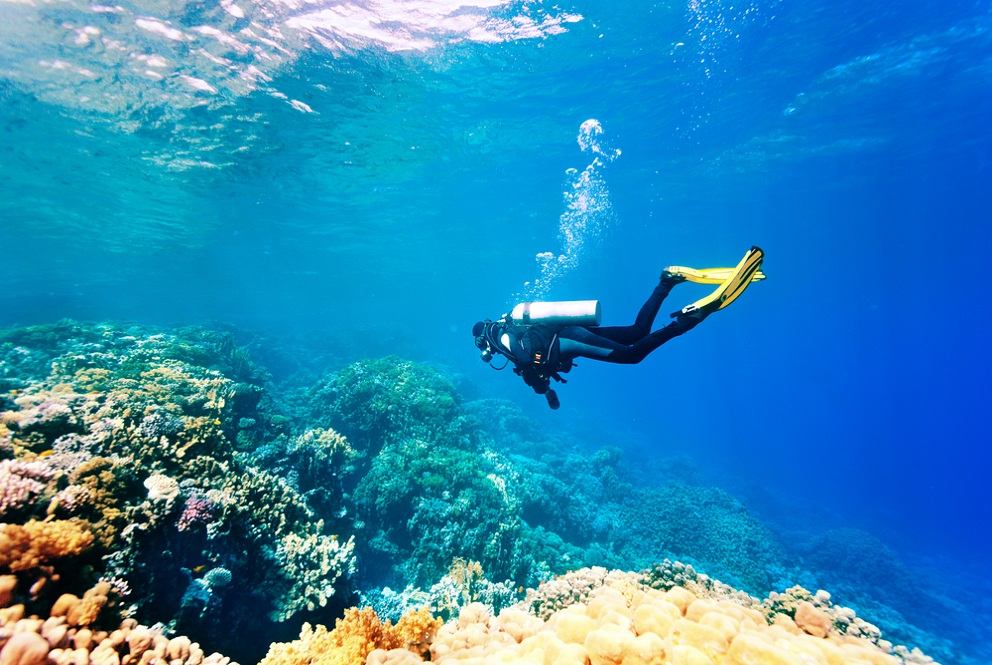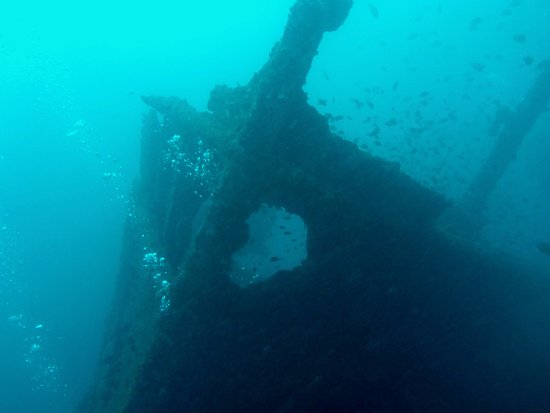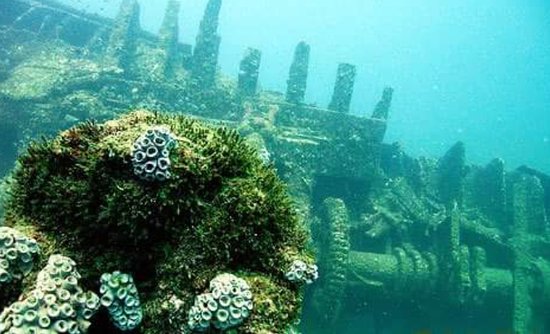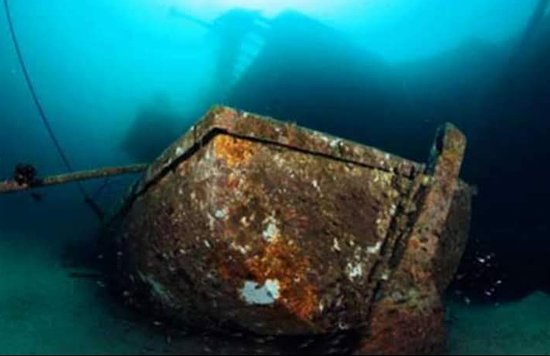Introduction
Did you know?
At present, there are 120 reported shipwrecks around Sri Lanka, but archeologists believe there could be more than 200 wrecks.
Sri Lanka as a wreck diving destination is gaining popularity at a very fast pace. But still, many are not aware of most of the valuable heritage of the country that lies on its seabed, mostly lost and forgotten. While the land of Sri Lanka is enriched with history and diversity, there is no doubt about the same with its ocean.
Why do so many ships enter Sri Lankan waters?
In the ancient Silk Route between China and Europe, Sri Lanka was a key trade and shipping route and since that period, there have been several shipwrecks collecting in Sri Lankan coastal waters. Ship wrecks provide a glimpse of how mariners live, their struggles and successes when navigating around the Indian Ocean.
The importance of a shipwreck in marine ecology
When the remnants of a ship sink and settles into the seabed, it becomes a part of the environment, and marine life revolves around it, using the vessel to form a foundation and framework to sustain a marine ecosystem. Over the years, shipwrecks transform into an amazing coral reef, making up a significant portion of marine ecology.
Once the reef environment has formed, it becomes a habitat for many types of marine life because it has soft and hard corals embedded into the natural reef. Fish, sponges, clams, squid, anemones, octopi, eels, cowries and mollusks are a few of the species that create a habitat among these sunken ships.
Why divers are excited about shipwrecks?
Divers are waiting for shipwrecks to transform into magnificent reefs that attract beautiful marine life because then they can go down and visit these treasures of the underwater world.
Why protect shipwrecks?
The older a shipwreck is, the richer it becomes in marine life and biodiversity. Hence the preservation of these wrecks is extremely important in marine ecology. According to studies, the long-term benefits of preserving a ship wreck in terms of marine tourism far outweighs the gains from salvaging the wreck for its scrap metal. So, here’s why we should protect shipwrecks:
- To preserve the marine ecosystem and natural heritage
- Creates tourism related jobs and sustainability
- Sustainability of local fisheries
- Scientific research purposes
What is the best time to plan a diving trip to Sri Lanka?
April to October is ideal for the East Coast and November to March is when the South and West become popular destinations. But the good thing about Sri Lanka is that the heavy rainy seasons are very rare and the East Coast has swim safe beaches all year round. So, you could plan a diving venture in Sri Lanka at pretty much any time of the year.
What are the most popular shipwreck dives in Sri Lanka?
Southern Coast
Treasure Ship – Kirinda
The Little and Great Basses wrecks are located off the deep Southern coast and can be accessible from Kirinda. During one of the trips across the spice route, this treasure ship, once belonging to the great Moghul Emperor known as Aurangzeb, went down in 1703. In 1961, Sir Arthur C Clarke and his diving instructor discovered this shipwreck which now hosts an ecosystem as intriguing as the treasures of the ship itself. Due to rough currents, only in March and April can this shipwreck be visited by divers.
Conch – Akkurala, Hikkaduwa
This was once a British tanker on the way to Chennai, from Novorossisk via Colombo, which went down after it struck the Akkurala rock, close to the Hikkaduwa coast. Holding several thousand tons of bulk oil which broke loose after hitting the reef, this vessel rested on the seabed at a depth of 22m. Diving down to this site, you will see a lot of colorful fish species as well as the steam engine, propellers, shafts and levers of the vessel.
A treasure trove in Galle
More than 100 ship wrecks have been found along the coast of Galle and Ambalangoda as a result of its comprehensive history and colonial domination. Some of the popular shipwrecks are the Earl of Shaftesbury (Hikkaduwa) and SS Rangoon (Unawatuna). Today, this collection of wrecks are an oasis of marine life.
MV Tricolor in Beruwala
Sitting at a depth of 65m underwater, the Norwegian ship MV Tricolor qualifies as the deepest known shipwreck found in Sri Lankan waters. This ship sank in 1931 when sailing from Colombo to Yokohama as a result of an explosion of dangerous chemicals on board. Today, the remnants of MV Tricolor can be found about 15kms west from Beruwala.
East Coast
Double Sunrise – Passikudah
In December 1943, the Dutch Squadron crashed off the east coast while on a mission to destroy a Japanese submarine in the Bay of Bengal. The name of this shipwreck comes from the crew members who survived and witnessed a sunrise twice during their journey.
HMS Hermes – Batticaloa
This was the world’s first aircraft carrier which eventually got buried under water during the second World War in 1942. Now at a depth of 50m off the East coast, this ship got bombed by the Japanese and went down after more than 40 direct hits by about 70 dive bombers! Exploring the HMS Hermes is like wading into an underwater museum home to several fish varieties, corals and other sea creatures.
Western Coast
Off the coast of Colombo going downwards towards Panadura, there are about 30 shipwrecks that make amazing diving sites.
Taprobane East Wreck – Colombo
There was once an unknown barge that fell to the seabed at a depth of 32m near the Taprobane East Reef off the coast of Colombo. It is indeed a wonderful sight in clear waters with an abundance of marine life.
SS Worcestershire – Moratuwa
In 1917, during the first World War, a British Merchant Navy Ship sank after striking a German sea mine. At a depth of 50-57m, the hull and collapsed bridge of this wreck can be seen. The marine ecosystem has created beautiful soft corals, black corals, whip corals and sea fans around this wreck.
MV Medhafuru – Mount Lavinia
A Maldivian cargo vessel failed off the coast of Mount Lavinia in 2009. Sitting upright at a depth of 30m, the top of the bridge is at 14m and can be easily explored.
What marine life can you expect to see around a shipwreck in Sri Lanka?
- Kalpitiya and Negombo, along the west coast of Sri Lanka boasts rich marine life such as schooling fish, cuttlefish, octopuses, vibrant reef fish as well as dolphins and whales.
- With Colombo being the busiest city in Sri Lanka, you may find it hard to believe but there is a heavily populated range of marine life including sting rays, glassfish, moray eels, lionfish and octopus. Mackerel, batfish, wahoo, and tuna are some popular marine life sightings here in Mount Lavinia.
- In Hikkaduwa and the rest of the southern coast, you can expect to see reefs with turtles, a wide variety of reef fish, and a dolphin or two on occasion can be seen within the vicinity of the older wrecks within the region.
- The East coast of Sri Lanka has some of the healthiest coral reefs amidst stunning World War II wrecks. Rays are a common sight here, in addition to the harmless blacktip sharks.
Conclusion
Little did you know about these famous ship wrecks in Sri Lanka with interesting stories of a bygone era? Well, now you are aware about the underwater treasures around the island. So, delve into the depths of the mighty Ocean by planning a wreck diving trip in Sri Lanka. Blue Lanka Tours can help you with your itinerary; we are just a phone call away!




